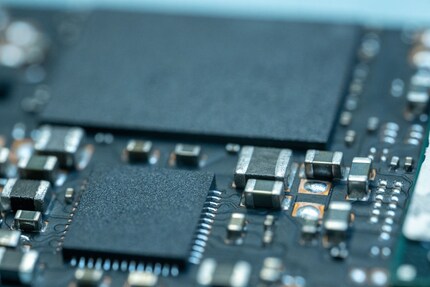
Background information
Failure and understanding: My old iMac and a new SSD
by Jan Johannsen

Crucial, Western Digital and Samsung – all renowned manufacturers of SSDs and other PC components. All of them are slowly replacing parts in these products after the fact – while not being as transparent as some would wish.
Picture this: you’re an SSD manufacturer about to release a new model. It’s well received by the trade press and customers alike. All is good, no? Well, it would be, if there weren’t this annoying semiconductor crisis. Now you’re missing important components such as controllers or NAND memory for your SSDs. So you look around for alternatives in order to continue manufacturing and selling your product.
That in itself isn’t wrong or reprehensible per se. Even before the crisis, manufacturers were modifying their products after the fact. During it, however, this behaviour is ramping up, especially among SSD manufacturers. But, most crucially: whether and how they communicate these changes is key. If they don’t, it’s just plain cheeky. Unfortunately, this does happen.
Adata started off in February 2021 with the XPG SX8200 Pro. According to Tomshardware, the manufacturer has made changes to their SSD without pointing it out. The model was always sold under the same product number, in the same packaging and with the same data sheet. At first, the manufacturer replaced the controller of the SSD and then the NAND flash memory several times. A total of four versions of the same SSD were in circulation in February 2021 according to Tomshardware. Which one you got when you bought it was completely up to chance. In Adata’s case, the versions following the original were slower.
Then, in early June, PNY hit the headlines. The American manufacturer reduced the expected lifetime, or Total Bytes Written (TBW), by almost 80 per cent for the XLR8 CS3030. PNY had updated the spec sheet, but the info did not get through to most retailers. They still sold the new version under old specifications. PNY justified the change in NAND flash memory with the global shortage. This had apparently also led to the reduction in its specified service life.
From early summer on, the cases started to accumulate. In mid-July, we found out that Patriot not only retroactively replaced the controller on the Viper VPN100, but also cut the DRAM to a quarter of the original. The changes were not communicated in time and the updated data sheet was published late. In addition, the product name was not adjusted either. According to Patriot, however, the performance of the VPN100 isn’t limited by these new components.

Crucial did something similar with the P2. The company swapped its Triple Layer Cell (TLC) NAND for a slower Quad Layer Cell (QLC) NAND, which is even less durable. The company updated the data sheet, but the product name and packaging remained the same. According to a test from Tomshardware, the P2’s performance suffers significantly under the new NAND, although Crucial says the performance should be the same.
Even a few days ago, it came out that Western Digital replaced the NAND memory in their Blue SN550. The company has updated its data sheet, but not the product name. However, performance only suffers in this case when cache memory is used up. In return, it then drops by up to 50 per cent. Western Digital has subsequently decided to update not only the data sheet but also the model number when products are changed internally.
Samsung has already proactively decided to take this step. The South Korean manufacturer changed the controller in the 970 Evo Plus. They are forced to do this for the same reason as the other manufacturers: the semiconductor crisis. Still, at least the SSD gets a new model number, packaging and data sheet. This should be standard practice changing something in an original product.
As a buyer, here’s my tip: keep your eyes open! Even if manufacturers such as Samsung act in an exemplary manner, you have to look closely. Most product reviews are done at launch. Although Samsung is transparent, the product purchased with its new model number differs from the tested one. So before buying, be aware that in the end, with the new 970 Evo Plus, you won’t own the same product as the tech site you trust.
It’s even more difficult in cases where the manufacturers don’t even adjust the model number. In such cases you only know which version you bought when taking it apart or looking at it with third-party tools on a PC. So, Google your desired SSD before buying it to find out whether it’s been tampered with, and if the answer is yes, what impact this has on the performance.
Since manufacturers reserve the right to make changes to products, this practice isn’t illegal. But it’s definitely not a good one. As a customer, the best you can hope for is transparency on the part of the manufacturer. Otherwise, stick by the old mantra: constant vigilance!
From big data to big brother, Cyborgs to Sci-Fi. All aspects of technology and society fascinate me.
Interesting facts about products, behind-the-scenes looks at manufacturers and deep-dives on interesting people.
Show all